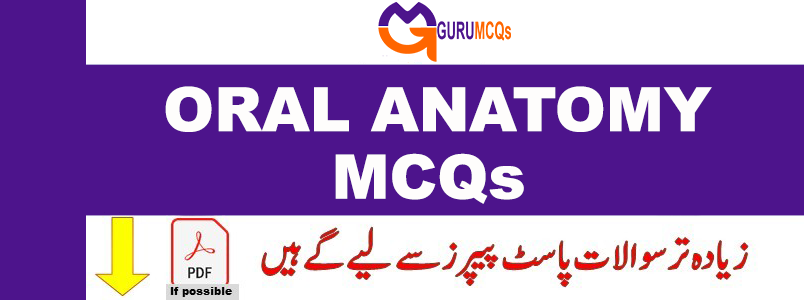
Gurumcqs.com offers a comprehensive collection of 2000+ basic and advanced oral anatomy MCQs, complete with answers and detailed explanations. This section is dedicated to covering all essential aspects of the oral anatomy subject, focusing on key topics related to the anatomy of the mouth and teeth. These include Basic Oral Anatomy, Calcification and Eruption of Teeth, Deciduous Dentition, Occlusion, Permanent Dentition, Physiologic Form of Tooth and Periodontium, Osseous Structures, TMJ, and more. The questions are carefully selected from reputable reference books on oral anatomy. These dental anatomy MCQs are valuable for interview preparation, entrance examinations, competitive exams, and certifications, catering to individuals with varying levels of experience, whether they are seasoned professionals, freshers, or students. Additionally, you can explore MCQs on medical topics on the platform.
51. Which anterior teeth have both mesial and distal contact areas of at the incisal third____________?
A. Mandibular centrals
B. Mandibular laterals
C. Both A and B
D. None of the above
52. The contact area on the distal side of a maxillary first premolar is located _____________?
A. Middle of the middle third with buccal embrasure wider than lingual
B. Middle of the middle third with lingual embrasure wider than buccal
C. Litter cervical to the junction of occlusal and middle third of the crown with wide occlusal embrasure
D. Cervical third with buccal embrasure wider than lingual embrasure
53. Generally , contact areas between posterior teeth are located in which directions from the centr of the proximal surface ____________?
A. Facially and occlusally
B. Facially and gingivally
C. Lingually and gingivally
D. Lingually and occlusally
54. An imaginary occlusal curve that contacts the buccal and lingual cusp tips of mandibular buccal teeth is called the _____________?
A. Catenary curve
B. Curve of spee
C. Monson curve
D. Wilson curve
55. The widest incisal embrasure is normally found between which of the following permanent maxillary teeth _____________?
A. Central incisors
B. Central and lateral incisors
C. Lateral incisor and canine
D. First and 2nd premolar
56. Divergence from contact area in proximal surfaces causes embrasures____________?
A. Facially
B. Lingually
C. Cervically
D. Facially, lingually , cervically & occlusally
57. The largest embrasure in posterior teeth is the__________?
A. Buccal
B. Distal
C. Lingual
D. Occlusal
58. The mesial contact are of the permanent canine is at the_______________?
A. Middle third
B. Junction of incisal and medial thirds
C. Junction of the middle & cervical thirds
D. None of the above
59. Which of the following has a nonfunctional cusp ?
A. Mandibular canine
B. Maxillary second premolar
C. Mandibular first premolar
D. None of the above
60. The most constant and valuable trait to differentiate among maxillary first, second and third molars i____________?
A. Number of roots
B. Depth of central fossae
C. Comparative size of the cusp of carabelli
D. Relative position of the distolingual grooves

Pingback: Oral Pathology MCQs with Answers for Exam Preparation - GURU MCQS